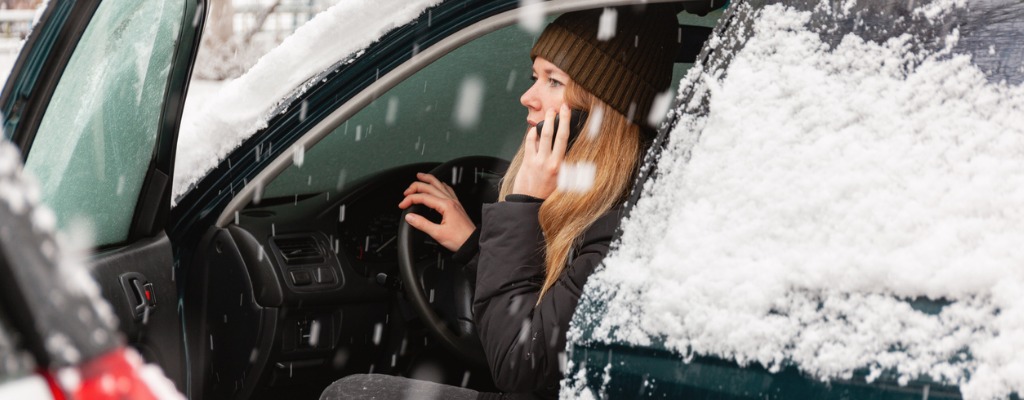Blizzards, Nor’ esters, ice storms – in many regions any of these could be a possibility. Are you prepared?
Preparing before a winter storm is an absolute must. If you aren’t prepared it can turn into a dangerous situation very quickly. There’s a higher risk for car accidents, getting stranded on the side of the road and extreme temperatures that can cause injuries like frostbite or even death.
If you think you can simply ride the storm out that could be a mistake. Winter storms can be short, lasting just a few hours, or they can last days. These storms can also cut off communication, heat, and power to your home.
Here are steps everyone should take if you live in an area where winter storms are possible.
Preparing Your Home
Evacuation is also the best idea when there’s a winter storm warning, especially if your home loses power. But sometimes evacuation isn’t possible. There are a number of things you can do to prepare your home before a winter storm bears down.
Weatherize your home if you haven’t already. Insulation, caulking, and weatherstripping can help prevent heat escape and keep cold air from seeping inside.
Insulate your pipes. This can help prevent pipes from freezing over and bursting.
Sign up for weather warnings. National and local weather centers can send alerts via text or email so you know if there’s a possibility of a winter storm. You can sign up for the national Emergency Alert System (EAS) and The Red Cross also has an Emergency app.
Make sure your generator is in good working condition beforehand. You don’t want to find out you are out of gas or a component isn’t working after a storm hits.
*SAFETY NOTE: Never use a generator indoors or near a window due to the risk of carbon monoxide poisoning.
Have enough water and non-perishable food for at least three days. This will be vital if you lose power, pipes freeze over or you get snowed in.
Keep prescription medications filled. There’s a good chance you won’t be able to refill a prescription for a few days if a winter storm blows into town.
Get a first aid kit. Having a first aid kit is a good idea in case of any emergency.
Get a battery-operated or hand-crank radio. If you lose power radio will allow you to stay informed. If the radio is battery-operated make sure to have extra batteries on hand.
Know proper heater safety. The National Fire Protection Association’s research recently found that space heaters cause 43% of heating-related house fires, and heating equipment is the second most common cause of house fires. Improper use of heaters is the #1 reason fires start. Heaters need to be at least three feet away from anything that can burn, and all space heaters whether portable or stationary need to be turned off when you go to sleep or leave the room.
Make sure all smoke alarms and carbon monoxide detectors are working. These are vital pieces of safety equipment, especially when you are using a fireplace or space heaters for warmth.
Have the furnace inspected and serviced. If you own a furnace it’s a good idea to have it inspected and serviced prior to the winter storm season.
Create an evacuation plan. When a winter storm is coming, every minute counts. Having an evacuation plan already plotted out will save you valuable time. Everyone in your household needs to be aware of the plan and what to do once a warning is issued.
Service your snow removal equipment. Just like your generator, you want to make sure snow removal equipment is in good working condition before a winter storm strikes.
Keep the fireplace operable and have a supply of firewood. A fireplace can be a great heating source even when there’s no power so long as it’s operable and you have firewood handy. Have the chimney inspected if you aren’t sure whether the fireplace is operable.
Safely store a supply of heating fuel. During a storm, you may not have access to heating fuel.
Trim back tree branches that are close to your home. In a winter storm, a tree limb could fall and cause damage.
Preparing Your Vehicle
Winter storms can hit with very little notice, and there’s no guarantee you’ll be at home when it does. Preparing your vehicle for winter storms can prove to be even more vital. Here are the things you’ll want to make sure to have on hand in case you have to hunker down in your vehicle.
- Road map
- First aid kit
- Warm blankets
- Extra jacket, scarf, gloves, hat, and water-resistant boots
- Cordless phone charger
- A gallon of drinking water
- Few high-protein, high-calorie snacks
- Jumper cables
- Flashlight
- Snow shovel
- Bag of non-clumping kitty litter
- Towline
- Flares
- Battery-powered hand radio
- Batteries
- Matches in a waterproof container
- Windshield scraper
- Tire chains or traction mats
- Spare tire
If you haven’t already, change out your all-season tires to winter tires. They will give you better traction in the snow and icy conditions. It’s also a good idea to keep your vehicle fueled up during the winter storm season just in case you need to evacuate quickly. A full tank will also prevent the fuel line from freezing.
*SAFETY NOTE: Never sit in your vehicle with the heater running. Doing so can lead to carbon monoxide poisoning.
The tips above will help you be prepared before a winter storm warning is issued. At Verde Energy, we do our best to keep customers connected and informed every day of the year. Check out the rest of our blog for more tips on how to keep your home comfortable.



